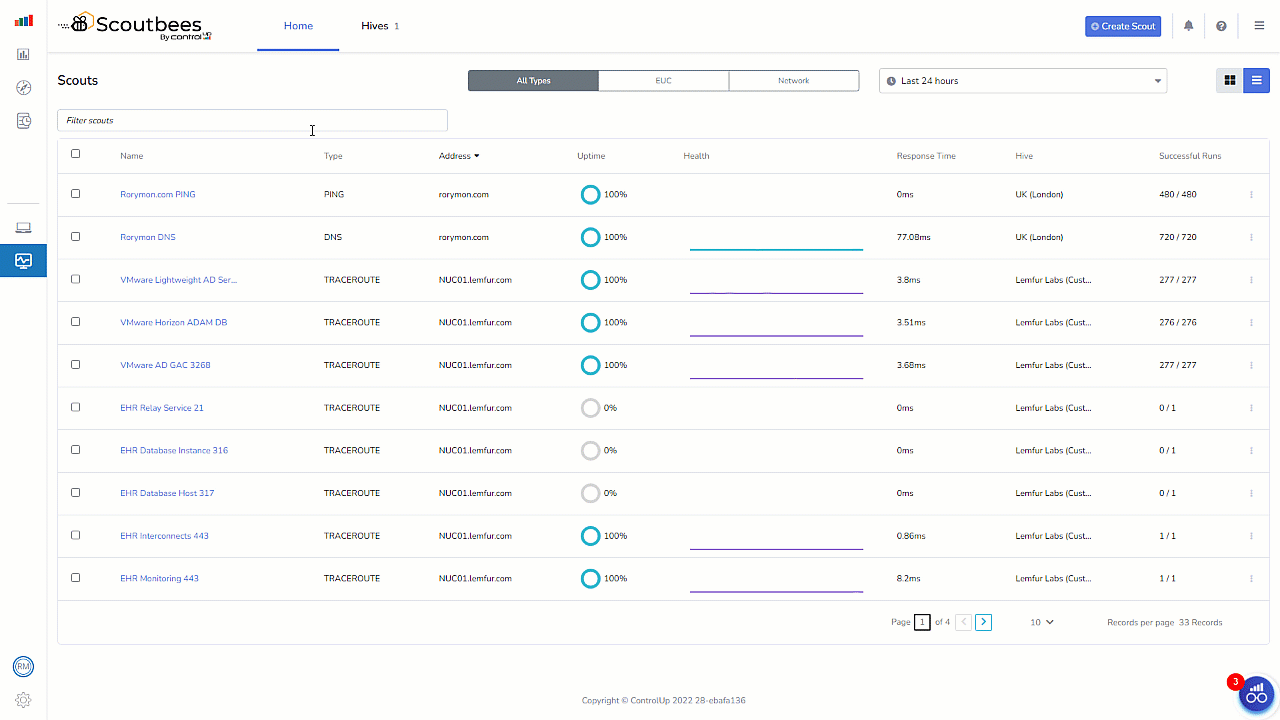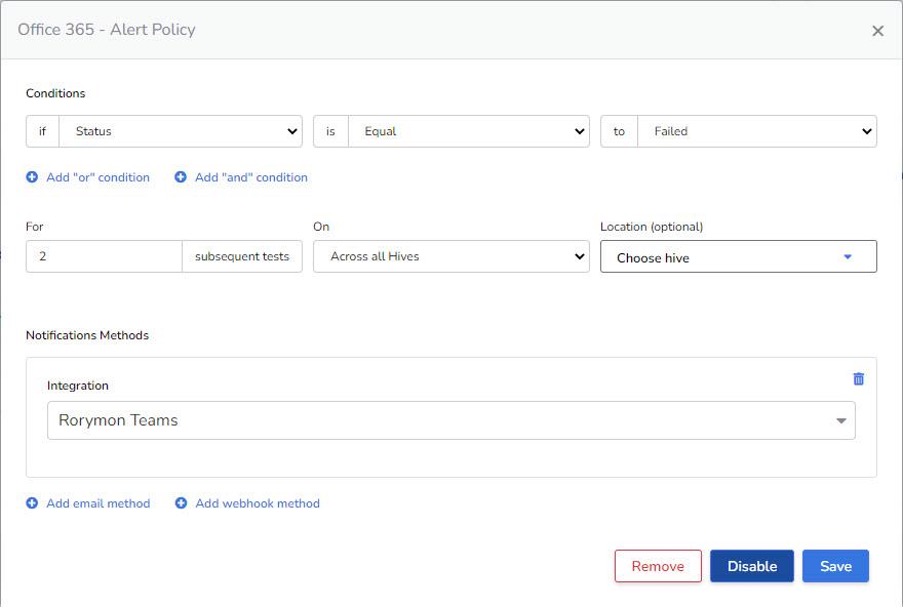
When it comes to healthcare, time is of the essence. And it’s no different in healthcare IT. Clinicians and healthcare workers need systems to be working and available when THEY need to work. Scoutbees, part of the ControlUp Digital Employee Experience management platform, can help ensure things are up and running, and keep your teams productive, no matter where they’re working.
Electronic Health Record (EHR) products are among the most critical pieces of software in the world. Ensuring optimal performance and availability of these systems is of the utmost importance.
Unplanned outages and prolonged disruptions can, quite literally, be a matter of life or death. During my time working in healthcare IT, I dreaded my turns at working on-call. Those 3:00 AM phone calls were good for neither my heart nor my soul. Early warning is a huge asset for healthcare IT teams in helping to avoid sudden outages and emergency, middle-of-the-night phone calls.
In healthcare environments, ControlUp Scoutbees proactive monitoring can be your best friend.
EHR vendors often provide their own analytics tools for their products, but we believe ControlUp’s suite of products is unmatched and best in class for monitoring and automatically remediating issues in these complex environments.
Scoutbees can provide you with early alerting of performance degradation, but also measure service uptime and test actual applications “in the wild.”

What can Scoutbees give you that your current analytics can’t?
ControlUp Scoutbees supports testing (pretty much) of any resource on your network AND even tests resources from outside your network. For example, how about your patient chart portal? It’s important that clinical staff inside the hospital have access to that, but it’s also important for those outside the hospital setting to have access, too. Maybe another care provider needs to access from their facility or even the patients, themselves, want to access from home or on the go.

With Scoutbees, you can test the performance and availability of the patient portal from each campus, each subnet, or whatever makes sense for your organization. You can also test from numerous geographical regions from outside the hospital settings, using Scoutbees Cloud Hives.
Figure 3. Quick video overview of Scoutbees EUC Scouts
Scoutbees can test your virtual desktops and published applications, including your EHR client software, as seen in the video above. The tests measure availability by testing whether or not the app is available in the web portal and performs an launch test of the application. Scoutbees also takes screenshots that are beneficial when troubleshooting a failed test. There’s no need to guess why the test failed; Scoutbees will show any error that appeared. These tests can be performed from inside the hospital network or externally with various different forms of multi-factor authentication (MFA) supported.
Your EHR client relies on many different back end services to function. EHR platforms are complex and typically have numerous components that are supported by various teams and these services should be tested and measured. In a perfect world, the EUC team would have visibility of the EUC published resources AND all underlying dependencies.
As a quick example of the dependencies to consider, here is a list—only intended as an example—of some of the services you might want to monitor.
| Component | Accessed | Ports |
| EHR Relay Service | Internally | 21 |
| EHR Database Instance | Internally | 316 |
| EHR Database Host | Internally | 317 |
| EHR Interconnects | Internally | 443 |
| EHR Client | Internally & externally | EUC Test |
| EHR Monitoring | Internally | 80 and 443 |
| EHR Analytics | Internally & externally | 443 |
| EHR Orchestration Services | Internally | 443 |
| EHR Print Services | Internally | 9100 |
| File Services | Internally | 445 |
| Web Blob | Internally | 445 |
| Patient Chart | Internally & externally | 443 |
| EHR Customer Portal | Internally & externally | 443 |
Figure 4. Table Showing an Example of Some Services an EHR is Dependent On
In the table, there is a mix of services of varying types. Things like web services will benefit not only from network-level testing, but also from HTTPS testing for loading the page(s). The Client application is typically delivered as a published application for centralized management and to allow external access. This benefits from an end-to-end test to ensure the entire underlying infrastructure for that platform is functioning optimally. Other services like Database and File Services could benefit most from traceroute testing to ensure port availability.

What ControlUp has with Scoutbees are the right types of tests for each service and overall availability, health and performance, for each, at a glance. We can drill down and get a look at availability, health, and performance from each location. For even richer data, we can drill into the test data. For our EUC test of the client, we get a breakdown of the logon duration including important phases like Group Policy Processing time, Authentication and more. For HTTPS, we can get data on things like Time to First Byte, TLS Handshake, and so much more. For Ping, DNS Lookup, and Traceroute, you can get other metrics related to these tests, too.

While correlation doesn’t necessarily point to causation, it can sometimes help lead to it. With Scoutbees, you can see which components that have dependencies on one another have the same (or similar) failure rate and more importantly, which do not. You can also quickly see the regions that are affected. This can help paint a picture of where a choke point exists in the overall process flow, where problems may lie, or even just point to a failure being completely systemic. In some cases, you may see failures only exist from inside the corporate network and continue to function externally. All great data to have.

Of course, seeing the data in Scoutbees is all well and good, but to always be informed in a timely way, you want to be alerted when a performance degradation is detected, so you can be proactive and address a problem before it gets worse and causes an outage. You also want early detection of an outage, so you can let your employees know about it as quickly as possible.
When alerted and you launch into Scoutbees to look at your services, you will be able to quickly tell if the failures are system wide or tied to specific components. For example, in the video above, we can pinpoint the failures to the Database Instance and Database Host. Enabling the IT teams and help desks to view all critical services health in a single pane of glass. No more guesswork, the help desk can quickly assign the correct resources to get a quick fix. All thanks to non-invasive proactive synthetic testing with Scoutbees. The power of Scoutbees can be a game-changer for healthcare IT teams and we encourage you to give it a try. You can have your first Scouts up and running in as fast as two minutes.
